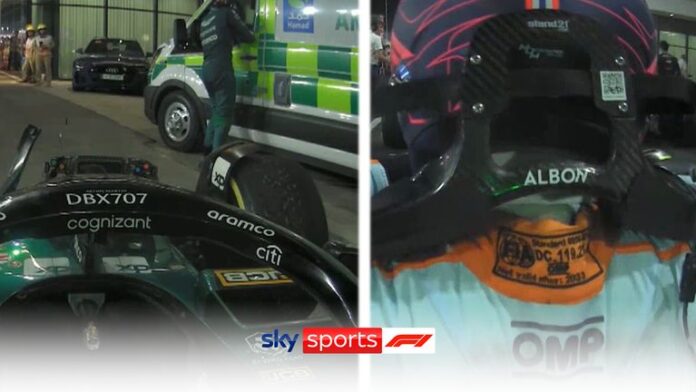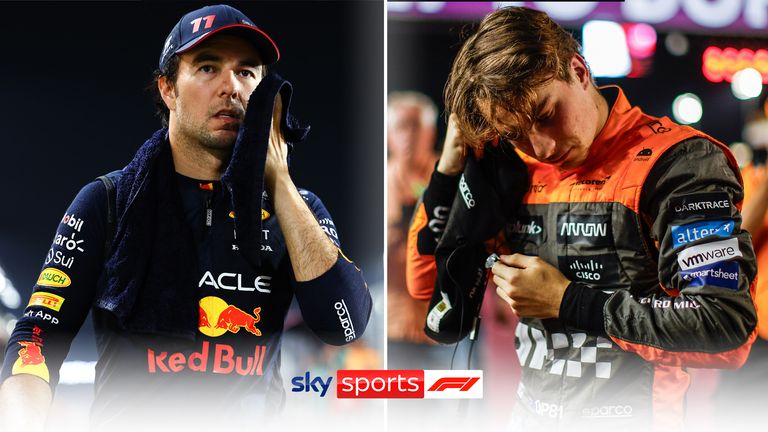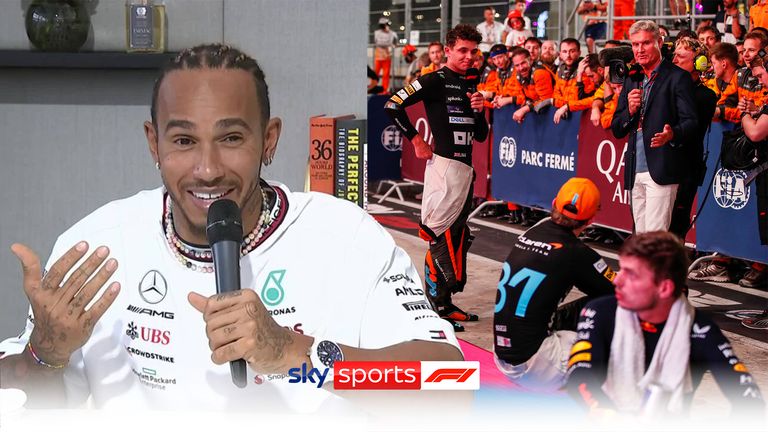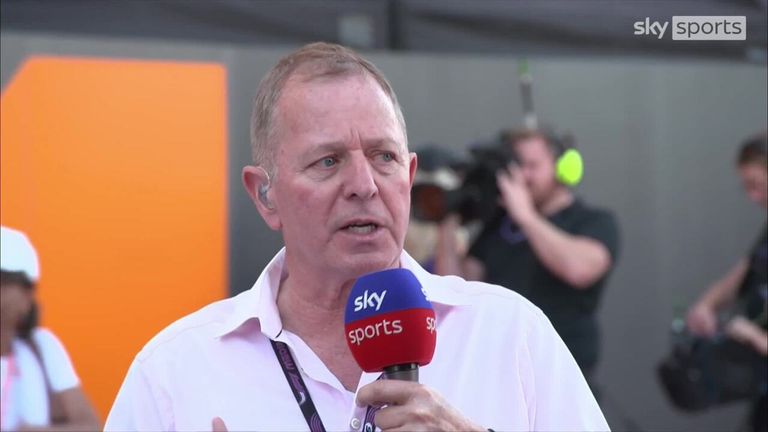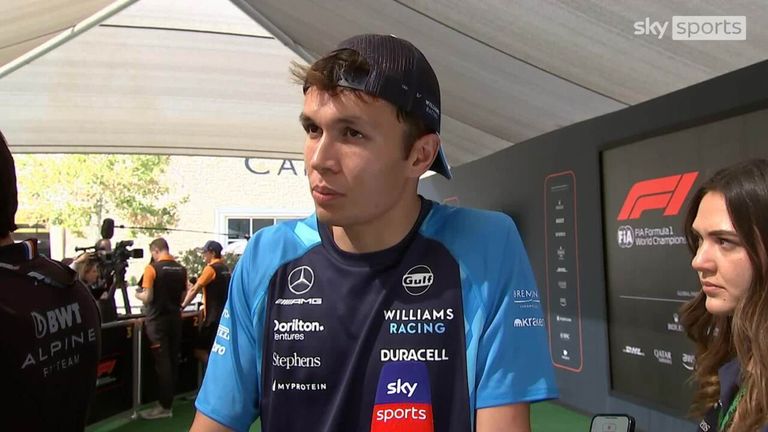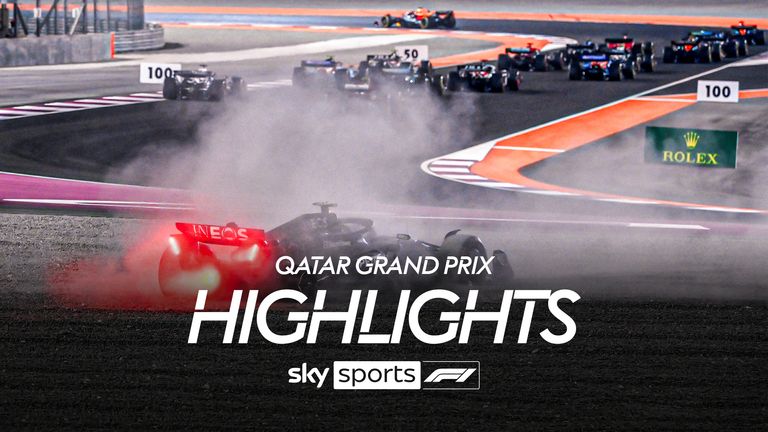The extreme challenge of October’s Qatar GP triggered a debate on whether F1 drivers are pushed to their physical limits often enough; Lewis Hamilton has warned against the sport becoming “too soft”; Martin Brundle says drivers should be made to look like the “gladiators” that they are
Last Updated: 30/11/23 7:33am
Formula 1 drivers are some of the finest tuned athletes in the world, but does the modern-day version of the sport provide them with enough opportunities to showcase their physicality?
October’s Qatar Grand Prix sparked a debate after a combination of factors led to what most drivers believed was the most physically challenging race of their career.
An earlier than ideal date for Qatar to host, which will not be the case in future, led to extraordinarily hot and humid conditions, while fears over tyre failure saw the FIA implement maximum stint lengths on each set of tyres, which meant drivers were able to push harder than usual.
Add to that the particularly high-speed and strenuous nature of the Losail International Circuit, and the drivers had an almighty task on their hands.
Williams rookie Logan Sargeant felt too sick to continue and retired, Alpine’s Esteban Ocon said he threw up in his helmet during the race, while several drivers went to the medical centre for checks following its conclusion.
The FIA released a statement after the race in which it promised to “take all reasonable measures to establish and communicate acceptable parameters in which competitions are held” and begin an analysis of the situation in an attempt to provide recommendations for future situations of “extreme weather conditions”.
While there was some criticism in the immediate aftermath of the race from drivers, an acceptance that the combination of elements in Qatar were freakish meant that the FIA has not taken too much flak from the competitors.
However, Lewis Hamilton, who retired on the first lap in Qatar, offered an outspoken opinion in Texas a couple of weeks later when expressing his fear that F1 could be becoming “too soft” and that drivers should “train harder” if they struggled.
While there is little doubt that the conditions in Qatar were at least verging on dangerous, Hamilton’s point that elite athletes should expect to be pushed to the limit is undoubtedly a valid one.
Brundle: Drivers should look like gladiators
Sky Sports F1’s Martin Brundle, who drove in 158 Grands Prix between 1984 and 1996, believes that driver safety is most important, but shares Hamilton’s views in terms of wanting to see them physically challenged.
“Qatar was an exception because obviously it got hot and it got humid and we had the tyre scenario and it’s high lateral forces there and it all came together,” Brundle said.
“And I thought the drivers looked absolute heroes. Sometimes, I’m going to be honest, when they jump out on a cool day at Monza or Spa and they’re chatting away in parc ferme or in the cool down room, and they look like they’ve not actually done anything that day – I’m slightly uncomfortable with that.
“I completely accept that Qatar was too much, but the race is much later next year, we presumably won’t have the tyre issue. The teams need to put some more air through the car and maybe some cool seats, maybe some other aspects, but that just needed quietly sorting out.
“My point was, I sat at home in awe of the drivers that day, as I do on a rainy day, I was totally in awe of them.
“And I don’t think we should overreact. It’s a one-off incident. Let just put this in perspective. So let’s not overreact to a very particular set of circumstances. Let’s revere the drivers and quietly just sort some other things out.
“I think I perhaps could have worded my X better, but I stand by my point that the drivers have to look heroes, because they are, they’re gladiators, and they need to look like they’re doing something that nobody else could do.”
Did the drivers enjoy break from tyre management?
The current set of F1 regulations, along with the tyres that are provided by Pirelli, mean that the fastest way to complete a race is often by doing the least possible amount of pit stops.
Rather than doing a two-stop strategy, drivers will often be asked to eke out their stints to allow a one-stop, therefore avoiding the significant time loss of coming into the speed-limited pit lane.
While there is undoubtedly huge skill involved in managing tyres and getting more out of a set for longer, the situation means that the scenes in Qatar when drivers are pushing as though they are driving qualifying laps throughout a race is very rare.
Lando Norris, who finished third in Qatar, believes a balance between the two styles of racing is most healthy.
The McLaren driver said: “I like a mixture to be honest, I like both. You normally prefer the ones which are like this. I did enjoy Qatar just with racing, with the pitstops, more to do with strategy, things like that. I enjoy that side.
“I also enjoy the races where you have to look after the tyres and manage things. Having both is good, I don’t think you just would want one of them. I feel like that’s more prescribed racing rather than just natural racing.
“So it depends on circuits and characteristics, tyre wear, all of those things. But I enjoyed Qatar, just the conditions were obviously very tough, that’s what made it so tricky.”
Ferrari’s Carlos Sainz, who didn’t get to start the race in Qatar because of a technical issue, was also enthused by the three-stop race that was enforced by the stint limitations, but also warned that those rules created an element of predictability.
“I like from the outset, I like the three-stop race. I didn’t like that it was restricted to a number of laps because you could predict when everyone was stopping,” Sainz said. “So I think there’s some aspects of that race that looked interesting, like how much the drivers had to push and how many times you had to go through pits to then come back to the field a bit and find yourself in traffic and having to overtake.
“But having the restricted laps on each tyre was… If you knew which tyre was everyone on you knew which lap they were going to stop. So almost there was not as much flexibility on the strategy as it looked from the outside. So yeah, hopefully the future is more on the side of pushing a bit more but two or three-stop races.
“Normally the best races in F1 are when it’s just on the gap between a one and a two stop, like maybe we saw Suzuka or the tracks where the two strategies are as quick as each other and it’s whoever optimises their own choice what makes it better or between two and a three. When it’s in between, that’s when the racing is good.”
What can F1 do to ensure drivers push more often?
While it is almost certain not to return to F1 for a variety of hugely legitimate reasons, refuelling – and therefore running the cars on low fuel throughout the race – saw drivers pushing very hard in previous eras.
Brundle explained: “When you used to have to come in to refuel, you’d always throw a new set of tyres on and you know there are drivers from that era who felt that that was the best racing because you went out and would absolutely banzai every lap.
“I remember I was managing David Coulthard at that time, just seeing him at the end of the race as absolutely exhausted because it was literally a Grand Prix of qualifying laps because you were pretty much always on fresh tyres and lowish or low fuel.
“The problem with that is you were locked in then to however much fuel you’ve got in the car, you couldn’t react to safety cars, weather, incident ahead of you and then there was the cost and ramification of taking refuelling rigs around the world and all the people to operate them. It’s a huge amount of weight and then there’s also the safety aspect.”
According to Brundle, another change which could enable drivers to push harder would be a return to having competing tyre manufacturers, with Pirelli having been the sole supplier to F1 teams since 2011.
“When we had a tyre war going on, they just brought the grippiest, best tyres at all times,” Brundle said.
“Pirelli are only racing themselves, so now the thing they’re most concerned about with the high downforce now and these big cars is tyre failure, because they’re going to win every Grand Prix, so bring something quite safe, as it were.”
With the popularity of Formula 1 greater than ever, there is little doubt that the current product is working well, those responsible for running the sport will undoubtedly be keen to take steps to ensure things remain that way.
What Brundle is certain of, whether it be in the case of reaction to a one-off race like Qatar or going in the opposite direction of ensuring drivers are pushed, nothing should be rushed.
He said: “Whatever you change in Formula 1, that’s why you have to creep up on any changes, there are unintended consequences. It’s such a complex business.”
A chance to support the Grand Prix Trust
Ahead of this weekend’s Autosport Awards in London, Martin Brundle is supporting a silent auction and prize draw in aid of the Grand Prix Trust charity, of which he is Chairman of the Trustees.
Take a look at the prizes below, and you could end up seeing Martin in the F1 paddock next year.
Bid in the silent auction
Enter the prize draw
24 races in 2024! Watch every round of next season live on Sky Sports F1, starting with the Bahrain Grand Prix from February 29-March 2. Stream F1 on Sky Sports with NOW
Source : Sky Sports



